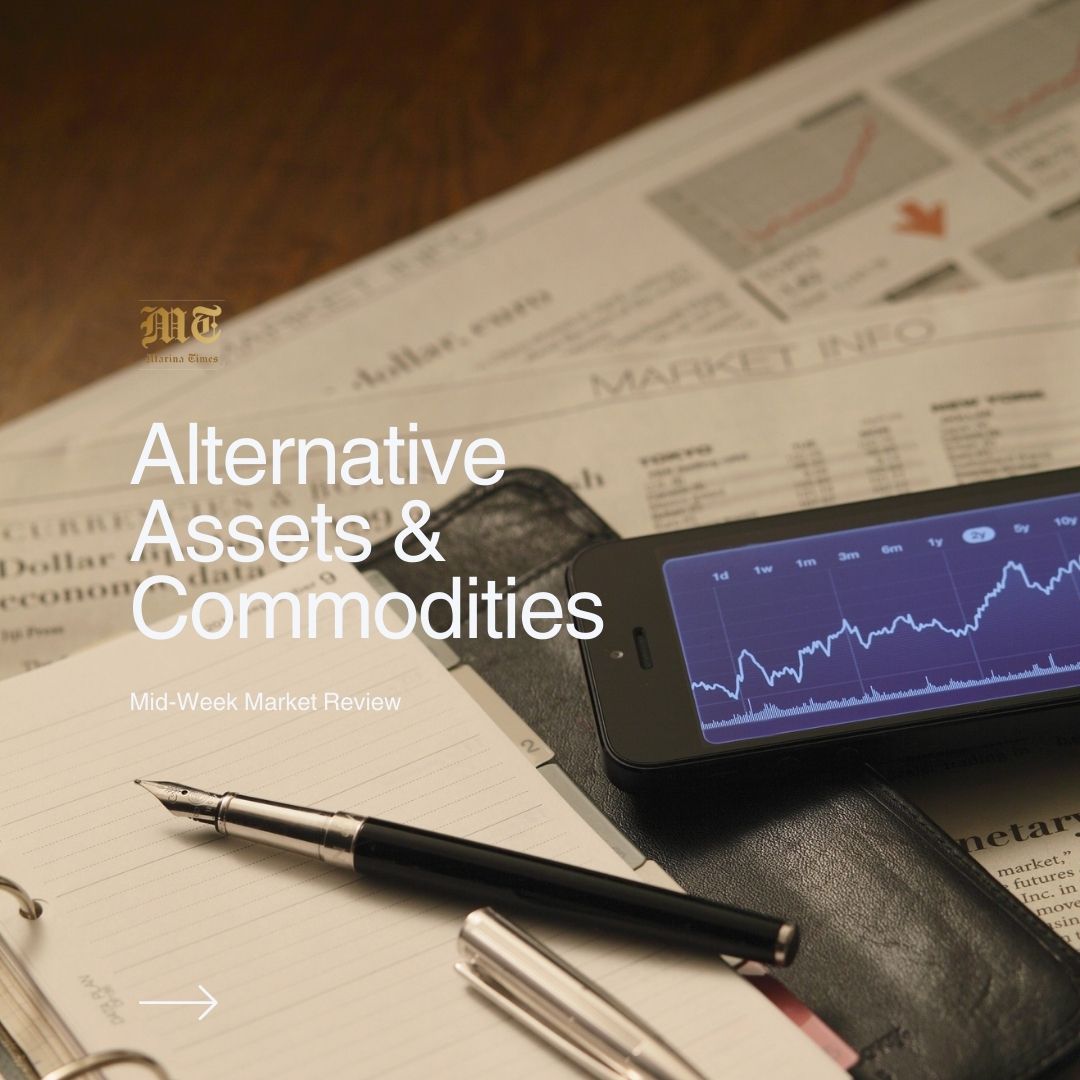

Oil prices registered their second consecutive weekly gain despite a slight decline on Friday, driven by renewed US sanctions against Iran and the latest OPEC+ production strategy, both of which heightened expectations of a tighter supply.
Brent crude futures settled at $72.12 per barrel, down 16 cents, while WTI crude edged lower by 1 cent to $68.29. Over the week, Brent crude rose by 2.08% and WTI by 1.64%, marking their most significant weekly increases since the beginning of the year.
The US Treasury’s latest sanctions against Iran, announced on Thursday, extended to independent Chinese refineries and other entities involved in supplying Iranian crude to China. The increasingly restrictive sanctions are expected to make market participants more cautious in shipping Iranian crude.
Adding to supply constraints, OPEC+ announced additional output reductions by seven member nations to compensate for previous overproduction. These cuts, ranging from 189,000 to 435,000 barrels per day (bpd) monthly, will continue until June 2026. Meanwhile, OPEC+ confirmed that eight of its members will implement a monthly output increase of 138,000 bpd from April, partially reversing the 5.85 million bpd of cuts imposed since 2022 to stabilise the market. However, Kazakhstan’s oil output hit a record high in March, exceeding its OPEC+ production quotas due to oilfield expansion.
Oil prices rebounded by over 1% on Monday after President Trump announced a 25% tariff on nations purchasing Venezuelan oil and gas. However, the impact was somewhat limited by a subsequent US government decision granting Chevron an extension until May 27 to conclude its Venezuelan operations. While this eased immediate pressure on Chevron, it intensified challenges for other consumers of Venezuelan crude, creating uncertainty over the enforcement of the new tariff. Brent crude rose by 91 cents to $73.03 per barrel, while WTI climbed 96 cents to $69.25. OPEC+ is expected to proceed with its planned May production increase.
On Tuesday, oil prices continued their upward trend due to concerns over tighter global supply following the US tariff threat on Venezuelan crude. Brent crude futures settled at $73.17 per barrel, up 14 cents, while WTI crude rose by 5 cents to $69.30. Meanwhile, the US brokered agreements with both Ukraine and Russia to temporarily halt attacks on maritime and energy infrastructure. In return, Washington pledged to push for the relaxation of certain sanctions on Moscow. However, both Kyiv and Moscow expressed doubts about each other’s commitment to compliance.
The Trump administration’s proposed tariffs on Venezuelan crude heightened supply concerns, pushing benchmark crude prices over 1% higher on Monday. Venezuela, whose primary export is oil, counts China—already subject to US import tariffs—as its largest customer. However, enforcement challenges remain, as alternative buyers could step in at increased costs.
Additionally, the extension of Chevron’s operational deadline in Venezuela to May 27 could lead to a reduction of approximately 200,000 bpd in Venezuelan oil production. According to US Commerce Department data, Venezuela was among the top foreign oil suppliers to the US last year.
Adding to the potential supply-side pressures, the US imposed fresh sanctions last week targeting Iranian oil exports. Despite these constraints, executives from commodity trading firms told Reuters they expect a well-supplied oil market for the remainder of the year, although concerns persist over the pace of global demand growth.
Implications for Nigeria
As a major oil producer, Nigeria remains highly exposed to global price swings. The recent price rally has several implications:
—
The oil market remains in flux, with geopolitical tensions, supply constraints and OPEC+ policies influencing price movements. While Brent and WTI prices have risen this week, potential developments such as a Russia–Ukraine ceasefire or increased OPEC+ production could alter the trajectory.
This week in the crypto market, institutional players made significant moves, and major announcements that shaped the market.
BTC started at $84,000 on March 18, surged to a peak of $88,530 by March 25, 2025, and is now stabilizing around $87,000.
ETH started at $1,900 on March 18 and dipped below $2,000. It bounced back to $2,020 on March 20 and is now hovering at $2,017. It is up 3.10% over the past seven days, with a solid 7.1% mid-week jump.
ETH has pulled itself out of a bearish phase, especially after exchanges of $1.8B left exchanges. However, ETF outflows of $370M over 12 days and Standard Chartered’s decision to slash its 2025 target to $4K weigh heavily on the market. Despite this, whale accumulation hints at a potential push to $2,200.
The U.S. Strategic Bitcoin Reserve Executive Order received a revision, adding XRP, Solana, and Cardano to the mix. Crypto Czar David Sacks cashed out before the announcement, causing some stir. BTC maximalists are cheering, while Altcoin fans are loving the new additions.
XRP’s has been performing strongly, trading between $2.43 and $2.59, depending on the source, with a market cap hovering near $142 to $150 billion, making it the fourth biggest cryptocurrency This comes after a legal victory over the SEC, where a federal judge ruled that XRP isn’t a security when traded on secondary markets—huge win for Ripple and XRP holders. With increasing adoption by banks and potential ETFs approvals, XRP’s future looks promising.
Leaks suggest that Russia is using BTC, ETH, and Tether to bypass sanctions, trading oil with China and India. The Bank of Russia has greenlight “limited” crypto purchases, and if this trend scales up, it could drive crypto prices higher. greenlightedThe Holesky testnet is set to shut down on September 30, while the Hoodi testnet went live on March 17, prepping for the Pectra upgrade on March 26.
Meanwhile, Fidelity filed for an on-chain U.S. Treasury Fund on Ethereum, set to launch on May 30, 2025.
Despite increasing difficulty as of March 23, Bitcoin’s hash price remains flat. Metaplanet recently acquired 150 BTC, bringing its total holdings to 3,350 BTC. Miners remain resilient, and Japan’s BTC reserve continues to grow, resembling a gold-like asset strategy.
Solana saw a 5.4% price jump ($133) following ETF speculation on March 20.
Michael Saylor’s MicroStrategy invested another $10.7M in BTC on March 18, increasing its holdings to 2.4% of the total BTC supply a remarkable milestone.
The SEC confirmed on March 18 that PoW (Proof of Work) mining rewards are not classified as securities. Meanwhile, the GENIUS Act, which seeks to regulate stablecoins, advanced on March 13, signaling potential regulatory clarity for BTC miners and stablecoins.
BlackRock’s CEO warned that Trump’s trade wars could disrupt Federal Reserve rate cut plans on March 16. Forbes raised concerns about potential panic-selling in the BTC market, adding to macroeconomic uncertainties. With $9T in Fed policy shifts potentially impacting crypto markets, volatility remains a key factor.
BTC continues to dominate, while ETH is clawing its way back with resilience. The crypto world is buzzing with major moves: Trump’s reserve expansion, Russia’s sanctions-dodging crypto trade, and Fidelity’s Ethereum fund. As volatility looms and the Federal Open Market Committee (FOMC) meeting approaches, the blockchain space remains hotter than ever. If you are already in, get ready to win!